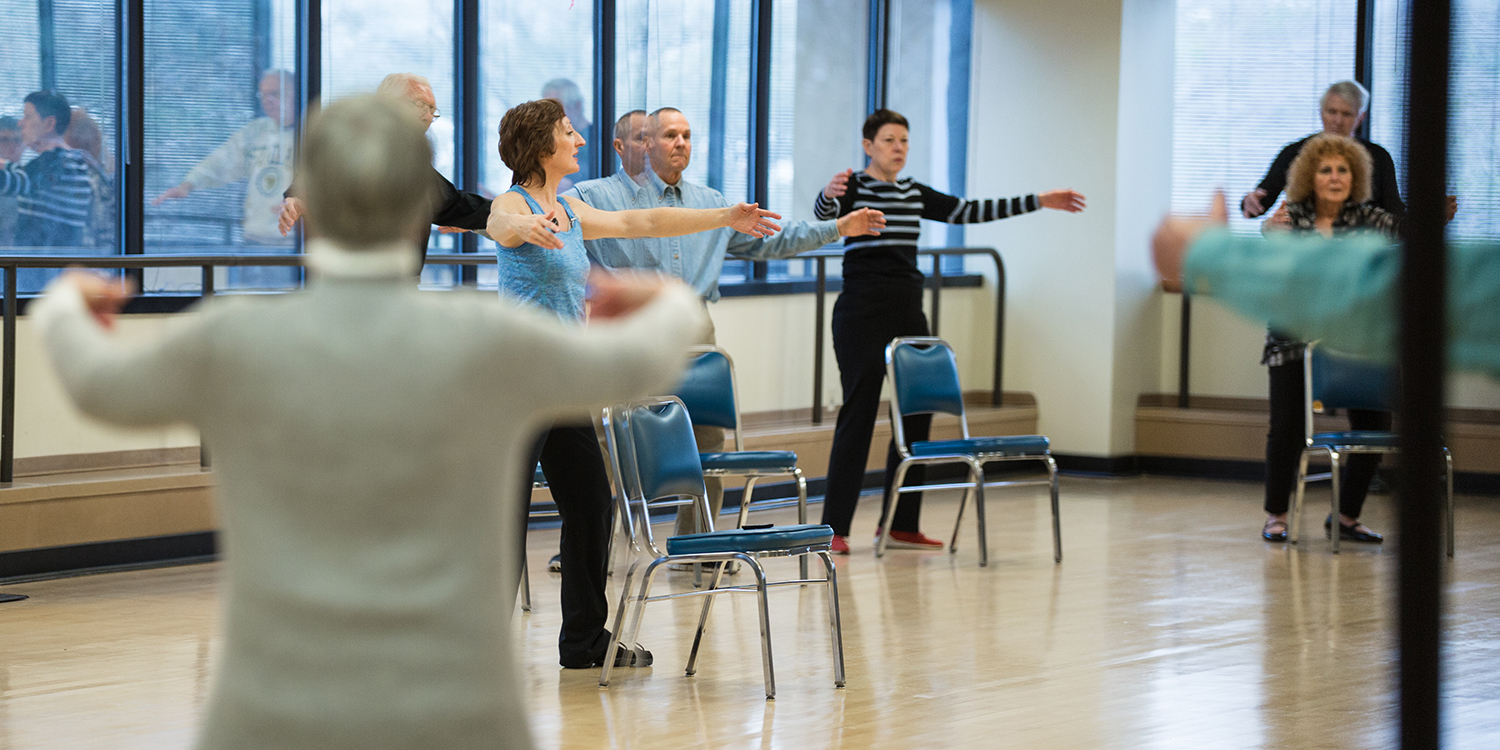 About 30 to 40 people with Parkinson’s disease are expressing themselves through movement in a class taught by UT Dallas instructor Misty Owens.
About 30 to 40 people with Parkinson’s disease are expressing themselves through movement in a class taught by UT Dallas instructor Misty Owens.
A Dallas group of 35 to 40 people meets twice a week in a spacious dance studio at Texas Health Presbyterian Dallas. The Dance for PD class includes modern, ballet, jazz, tap and world dance. The majority of the time is devoted to movements that are done while seated, then standing with support, then walking and dancing without support.
One of the class participants, Bobbi Myers, said she began taking ballet lessons when she was 7 years old and continued dancing, eventually joining the Sacramento Ballet Company in California. She said that while she experiences some frustration that her movements have been curtailed, the class feeds her soul.
“It’s more than just a dance class; it’s a community support system. We care about each other, and we try to support each other as we travel through this journey with Parkinson’s and other movement disorders,” Myers said.
While each participant’s experience is different, many say the disease’s progression has been slowed or, in some cases, they have experienced smoother movements since they joined the dance class.
“I encourage each person, embracing each step that they take, as they enhance their talents through dance vocabulary and movement combinations resulting in greater self-confidence,” Owens said. “This self-confidence permeates the entire person, affecting all of their activities, creating more ambition, drive and self-assurance.”